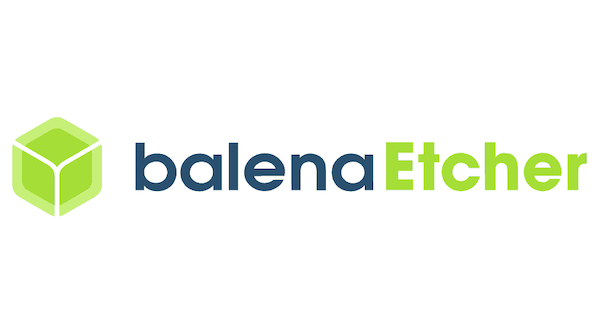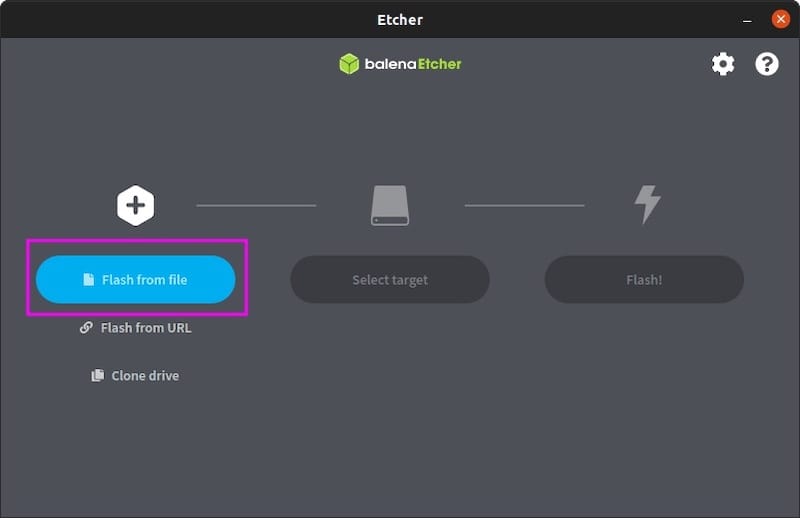How To Install BalenaEtcher on Fedora 41

BalenaEtcher is an open-source USB flasher tool designed to create bootable USB drives from ISO or IMG files. Its popularity stems from its cross-platform support, intuitive interface, and robust safety features. For Fedora users, BalenaEtcher simplifies the process of creating bootable media for various Linux distributions, making it an invaluable tool in any tech enthusiast’s arsenal.
This article aims to provide a comprehensive, step-by-step guide to installing BalenaEtcher on Fedora 41. Whether you’re a seasoned Linux user or new to the Fedora ecosystem, this guide will ensure you can successfully set up and use BalenaEtcher for your USB flashing needs.
Prerequisites and Preparations
Before diving into the installation process, it’s crucial to ensure your system meets the necessary requirements and is properly prepared. This section will cover the essential steps to set the stage for a smooth BalenaEtcher installation.
System Requirements
To run BalenaEtcher on Fedora 41, your system should meet the following minimum requirements:
- A 64-bit x86 or ARM processor
- 2 GB of RAM (4 GB recommended)
- 1 GB of available storage space
- An active internet connection
Updating Your Fedora System
It’s always a good practice to ensure your system is up-to-date before installing new software. This helps prevent potential conflicts and ensures you have the latest security patches. To update your Fedora system, open a terminal and run the following command:
sudo dnf updateThis command will fetch the latest package information and install any available updates. Depending on your system’s current state, this process may take a few minutes to complete.
Installing Required Dependencies
BalenaEtcher requires certain dependencies to function correctly. One of the key tools we’ll need is curl, which is used to download files from the internet. To install curl, execute the following command in your terminal:
sudo dnf install curlThis command will install curl if it’s not already present on your system. If curl is already installed, the package manager will inform you that it’s up to date.
Adding the BalenaEtcher Repository
BalenaEtcher is not available in Fedora’s default repositories. To install it, we need to add the official Balena repository to our system. This process involves using curl to fetch and execute a setup script provided by Balena.
Adding the Repository
To add the BalenaEtcher repository, run the following command in your terminal:
curl -1sLf 'https://dl.cloudsmith.io/public/balena/etcher/setup.rpm.sh' | sudo -E bashThis command performs several actions:
- Downloads the repository setup script from Balena’s server.
- Pipes the script to bash, which executes it with sudo privileges.
- The script adds the necessary repository information to your system.
Verifying the Repository
After running the command, you can verify that the repository has been added successfully by checking the contents of the /etc/yum.repos.d/ directory. You should see a file named balena-etcher.repo. To list the contents of this directory, use the following command:
ls /etc/yum.repos.d/If you see the balena-etcher.repo file listed, the repository has been successfully added to your system.
Installing BalenaEtcher on Fedora 41
With the repository added, we can now proceed to install BalenaEtcher using Fedora’s DNF package manager. This section will guide you through the installation process and address common issues you might encounter.
Installation Steps
To install BalenaEtcher, run the following command in your terminal:
sudo dnf install balena-etcherThis command instructs DNF to fetch and install BalenaEtcher along with any necessary dependencies. The package manager will display a summary of the packages to be installed and prompt for confirmation. Type ‘y’ and press Enter to proceed with the installation.
Understanding the Installation Process
During the installation, DNF performs several tasks:
- Resolves dependencies: DNF checks for and installs any additional packages required by BalenaEtcher.
- Downloads packages: The necessary files are downloaded from the Balena repository and Fedora’s mirrors.
- Verifies packages: Downloaded packages are checked for integrity to ensure they haven’t been tampered with.
- Installs files: The packages are unpacked, and files are placed in the appropriate locations on your system.
- Updates system databases: Package databases are updated to reflect the new installation.
Troubleshooting Common Installation Issues
While the installation process is usually straightforward, you might encounter some issues. Here are solutions to common problems:
- Dependency conflicts: If DNF reports conflicts with existing packages, try updating your system again with
sudo dnf updateand then attempt the installation. - Network errors: Ensure you have a stable internet connection. If issues persist, try changing your DNS server or using a different network.
- Repository errors: If the Balena repository is unavailable, wait a few minutes and try again. If the problem persists, check Balena’s status page or forums for any reported issues.
Launching and Using BalenaEtcher
Now that BalenaEtcher is installed on your Fedora 41 system, it’s time to launch the application and learn how to use it effectively. This section will guide you through the process of opening BalenaEtcher and creating a bootable USB drive.
Launching BalenaEtcher
There are two primary methods to launch BalenaEtcher on Fedora 41:
- Using the Applications Menu:
- Click on the Activities overview in the top-left corner of your screen.
- Click on the grid icon to show all applications.
- Scroll through the list or use the search bar to find “balenaEtcher”.
- Click on the balenaEtcher icon to launch the application.
- Using the Terminal:
- Open a terminal window.
- Type the following command and press Enter:
balena-etcher-electron

Creating a Bootable USB Drive
Once BalenaEtcher is open, follow these steps to create a bootable USB drive:
- Select the Image:
- Click on “Flash from file” in the BalenaEtcher interface.
- Navigate to the location of your ISO or IMG file and select it.
- Choose the Target Drive:
- Click on “Select target”.
- Choose the USB drive you want to use. BalenaEtcher will automatically detect removable drives to prevent accidental overwriting of your system drive.
- Flash the Drive:
- Click on “Flash!” to begin the process.
- BalenaEtcher will warn you that all data on the selected drive will be erased. Confirm if you’re sure you want to proceed.
- Wait for Completion:
- The flashing process will begin. This may take several minutes depending on the size of your image and the speed of your USB drive.
- BalenaEtcher will validate the flashed drive to ensure the data was written correctly.
- Finish:
- Once the process is complete, BalenaEtcher will notify you that the flash was successful.
- You can now safely eject your USB drive and use it to boot or install your chosen operating system.
Safety Features and Best Practices
BalenaEtcher includes several safety features to prevent accidental data loss:
- Drive Detection: It automatically detects removable drives to minimize the risk of overwriting system drives.
- Write Protection: BalenaEtcher disables the ability to flash to system drives.
- Validation: After flashing, it verifies the written data to ensure integrity.
For best results, always use a high-quality USB drive and ensure you have a stable power supply during the flashing process.
Optional: Uninstalling BalenaEtcher
While BalenaEtcher is a valuable tool, there might be situations where you need to remove it from your Fedora system. This could be due to space constraints, the need to install a different version, or simply because you no longer require the software. Here’s how you can cleanly uninstall BalenaEtcher from Fedora 41.
Uninstallation Steps
- Remove the BalenaEtcher Package:Open a terminal and run the following command:
sudo dnf remove balena-etcher-electronThis command will remove the main BalenaEtcher package and any dependencies that are no longer needed.
- Remove the Repository:To completely remove all traces of BalenaEtcher, you should also remove the repository file. Use this command:
sudo rm /etc/yum.repos.d/balena-etcher.repoThis removes the repository configuration file, preventing any future updates or reinstallation attempts from this source.
Cleaning Up Residual Files
After uninstalling, you may want to remove any leftover configuration files or cached data. Here are some steps to ensure a thorough cleanup:
- Remove User Data:BalenaEtcher may have created some user-specific data. Remove it with:
rm -rf ~/.config/balena-etcher-electron - Clear DNF Cache:To remove cached package data, run:
sudo dnf clean all
Verifying Uninstallation
To ensure BalenaEtcher has been completely removed, you can perform these checks:
- Try to run BalenaEtcher from the terminal:
balena-etcher-electronIf the uninstallation was successful, you should see a “command not found” error.
- Check for the presence of the repository file:
ls /etc/yum.repos.d/ | grep balena-etcherThis command should return no results if the repository was successfully removed.
Alternative Installation Methods
While the repository method is the recommended way to install BalenaEtcher on Fedora 41, there are alternative approaches that might suit certain users or situations. This section explores two such methods: using AppImage and building from source.
Using AppImage
AppImage is a universal Linux package format that allows applications to run on various Linux distributions without the need for installation. Here’s how to use the AppImage version of BalenaEtcher:
- Download the AppImage:
- Visit the official BalenaEtcher website (https://www.balena.io/etcher/).
- Click on the download button for Linux.
- Select the AppImage option.
- Make the AppImage Executable:Open a terminal, navigate to the directory containing the downloaded AppImage, and run:
chmod +x balenaEtcher-*.AppImage - Run BalenaEtcher:You can now run BalenaEtcher by double-clicking the AppImage file in your file manager, or by running it from the terminal:
./balenaEtcher-*.AppImage
The AppImage method offers the advantage of easy portability and doesn’t require root access for installation. However, it won’t integrate with your system’s application menu by default.
Congratulations! You have successfully installed BalenaEtcher. Thanks for using this tutorial for installing the BalenaEtcher on your Fedora 41 system. For additional help or useful information, we recommend you check the official BalenaEtcher website.